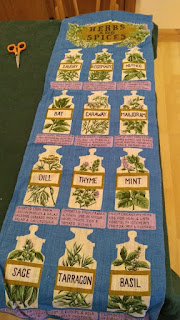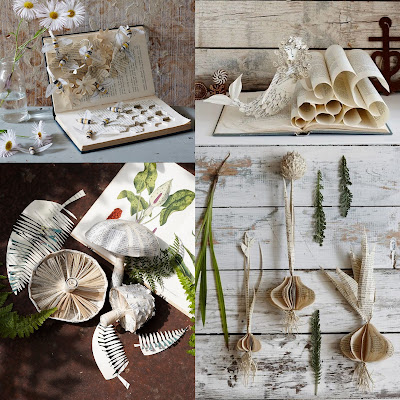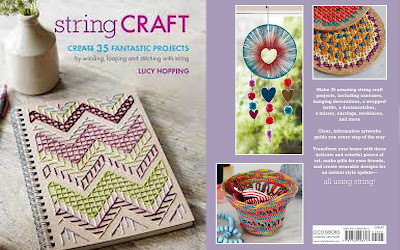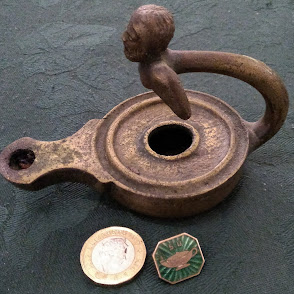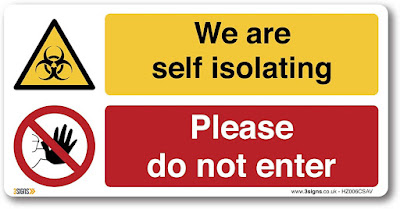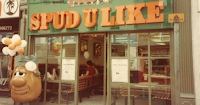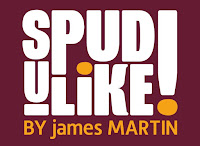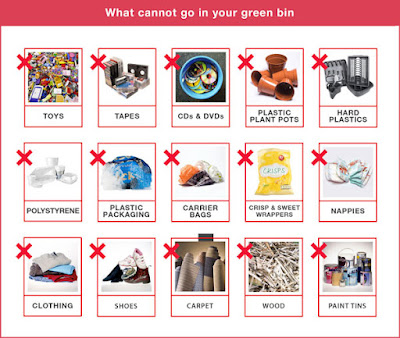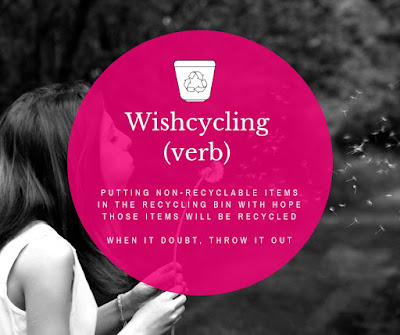 This was a new term for me - I confess that I have been guilty of this in the past "do you think this will be recyclable, Bob? I hope so!" And now I find that I may have messed things up by putting in the wrong stuff. Sue's post about the onions started me on this.The dilemma of buying onions loose [from Spain] or in a plastic bag [English] Which is the better eco-choice - plastic or transportation?
This was a new term for me - I confess that I have been guilty of this in the past "do you think this will be recyclable, Bob? I hope so!" And now I find that I may have messed things up by putting in the wrong stuff. Sue's post about the onions started me on this.The dilemma of buying onions loose [from Spain] or in a plastic bag [English] Which is the better eco-choice - plastic or transportation?
And when you get the goods home from the supermarket, how much of the packaging can go into the recycling? I didn't realise that the triangle of arrows symbol can be used by any manufacturer, and does not guarantee the item can be recycled.
I'm pleased that most supermarkets now have facilities for 'soft plastics' - bread bags, veg bags, soft plastic carriers [not biodegradable ones] And others have bins for water filter cartridges - I noticed our big Sainsburys actually has a collection point for used Teflon pans. All very laudable, but it does mean a lot of sorting, and remembering to take these things when you go out to shop.
Local councils are trying hard to keep people informed about what to put in the recycling bins - and it really does vary from place to place. Some still insist you take glass to a bottle bank - others are happy for it to go in the recycling [unless it is Pyrex, or broken glass] Below is the chart for North Norfolk residents [here in Breckland, green is the ordinary bin, the recycling one is black. I have stenciled huge symbols on the back bin, so our visitors know whats what!]
But it really does depend on where you live. I put some thin wire coathangers in the bin just before we left Dorset [tin foil, drinks cans, hangers - all metal, right?] But apparently that was wrong.This site has lots of helpful advice. And getting back to those arrows, which have been around for half a century now, created to honour the first Earth Day in 1970
Numbers 1 & 2 are consistently OK for recycling [shampoo bottles etc] 3 through to 7 are the more complicated plastics. These numbers were developed by the plastics industry in the 80s. I have no idea where 9 fits in!Wish-cycling is what we do when
we put materials in the bin with a wink and a
prayer, hoping they will get
recycled but not knowing for sure. Most of us have found
ourselves hovering there for a moment. Can I recycle a crisp packet? What
about a food-splattered napkin? A half full pot of hummus? Wish-cyclers believe that they’re
better off popping the material in, because it’s all headed to
a recycling facility further down the
line. Unfortunately, misplaced optimism when it comes to waste
can have bad consequences.
Wish-cycling causes contamination, which prevents the good stuff getting through. Hand sorting is the first element of the process at most UK facilities. Real
people will work hard to filter out the good quality recyclables
so they can be sent on to make wonderful new things. This job can get
quite tough if the sorting line is full of half-full soup
pots, dregs of lattes in coffee cups or even broken glass
bottles. Essentially wish-cycling doesn’t do
anyone any favours.
Positive steps to take
- Where possible avoid all plastic wrapping
- Think about it before you buy
- Encourage local traders to be more conscientious
- Check your local bin rules
- Find out where other stuff can be recycled
- Please make sure it is clean
- Go to recyclenow.com for more advice
- Encourage others to recycle too.
And if anybody tells you they are too old to start this game, point out that they have a responsibility to the younger generation! During WW2, it became second nature to avoid waste- saving paper and string, making do and mending, washing and cooking with the minimum of water and fuel, feeding food scraps to the animals...If great-granny could do it, then so can we. She was doing it to help the nation win the war, now it is to help the people save the planet.













